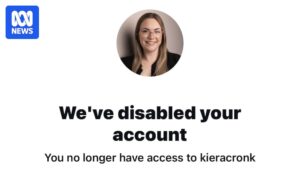
Not long ago, attention deficit hyperactivity disorder (ADHD) was primarily seen as a childhood condition that many believed would be outgrown. Today, however, it has become a prominent topic of discussion across various platforms. From TikTok videos describing relatable “ADHD moments” to clinics overwhelmed with appointment requests, the disorder is now widely recognized. Adults are increasingly receiving diagnoses that clarify years of chaos and exhaustion.
This heightened visibility has undoubtedly improved public understanding of ADHD. However, it has also led to significant changes in the usage of medications designed to alleviate its symptoms, with instances of misuse becoming more prevalent.
Understanding ADHD and Its Treatment
ADHD affects the brain’s management of attention, motivation, and self-control. For some, this results in racing thoughts, missed deadlines, and constant restlessness. For others, it manifests as a fog of distraction that complicates task completion.
Research involving brain imaging of individuals with ADHD reveals subtle differences in how attention and reward circuits communicate. These systems depend on chemical messengers like dopamine and noradrenaline. When these signals are inefficient, even simple tasks become challenging to initiate and sustain.
Medications such as methylphenidate (Ritalin) and lisdexamfetamine (Vyvanse) enhance dopamine and noradrenaline activity in the brain, improving focus, motivation, and impulse control. Large clinical reviews highlight broader benefits, including reduced risks of depression, substance misuse, and even criminal behavior among those with ADHD.
The Rise in ADHD Medication Prescriptions
Between 2013 and 2023, stimulant prescriptions surged from approximately 800,000 to over 4 million annually. While increased diagnoses and treatments are positive developments, they also mean more medication is available in the community, increasing the likelihood of these drugs being shared, sold, or misused.
According to the National Drug Strategy Household Survey, about 400,000 Australians—roughly one in 48 people—used prescription stimulants non-medically in the past year. Among those in their 20s, this figure rises to about one in 20.
Why Non-ADHD Individuals Use Stimulants
Some individuals use stimulants to stay awake for studying or working long hours, while others seek a “high” or appetite suppression. Online, these drugs are often promoted as “smart drugs” or cognitive enhancers, promising increased productivity and brainpower.
This concept isn’t new. In the 1970s, psychologist Corneliu Giurgea coined the term “nootropic,” suggesting that “man is not going to wait passively for millions of years before evolution offers him a better brain.” However, over 50 years later, the science does not support this dream. Research shows that much of the perceived “boost” from stimulants is due to expectation rather than actual improvement.
In one experiment, university students who believed they had taken Ritalin reported feeling more focused and euphoric, even when they had received a placebo—a sugar pill with no active drug.
Risks and Regulations of ADHD Medications
While medications like Ritalin and Vyvanse are manufactured to strict pharmaceutical standards, their safety depends entirely on careful medical supervision, including appropriate dosing and regular health monitoring. Without this oversight, especially when mixed with alcohol or other substances, the risks increase significantly.
Misuse of these drugs—such as taking higher or more frequent doses—can lead to tolerance, requiring increasingly larger amounts to achieve the same effects. The high also wears off sharply, resulting in a “crash” of fatigue, irritability, and low mood, which may prompt further use.
Over time, this cycle may lead to anxiety, insomnia, and heart problems. A study of emergency department presentations for stimulant-related issues from 2004 to 2014 found that visits increased alongside greater availability.
Controlling ADHD Medications
In Australia, ADHD stimulants are classified as Schedule 8 controlled drugs, meaning their prescribing is tightly regulated. However, regulations differ by state and territory. New national ADHD guidelines recommend more consistent oversight, shared care between specialists and GPs, and better follow-up to reduce misuse and diversion.
Policy is evolving, but harm reduction has yet to catch up. Compared with substances like alcohol, tobacco, or cannabis, public education on prescription stimulant misuse remains minimal.
Australia’s history offers a cautionary tale regarding the misuse of prescription medications. When opioid and benzodiazepine prescribing surged in previous decades, supply restrictions alone failed to curb misuse. Instead, people turned to black markets and unregulated online sources, where counterfeit and high-potency products filled the gap.
If stimulant policy follows a similar path—focusing on control but neglecting prevention and education—we risk repeating those mistakes. In the United States, rising stimulant prescriptions have been accompanied by sharp increases in misuse and stimulant use disorder—the clinical term for addiction.
In response, health agencies have adopted more balanced approaches, integrating prescription drug monitoring programs, clinician training on safer prescribing, and community-based education campaigns. As awareness and diagnosis of ADHD continue to rise in Australia, adopting these measures—including real-time prescription monitoring—could reduce harms while preserving access for those who genuinely need treatment.
Blair Aitken, Postdoctoral Research Fellow in Psychopharmacology, Swinburne University of Technology, and Amie Hayley, Rebecca L. Cooper Al & Val Rosenstrauss Fellow and Senior Research Fellow, Swinburne University of Technology, contributed to this analysis.







